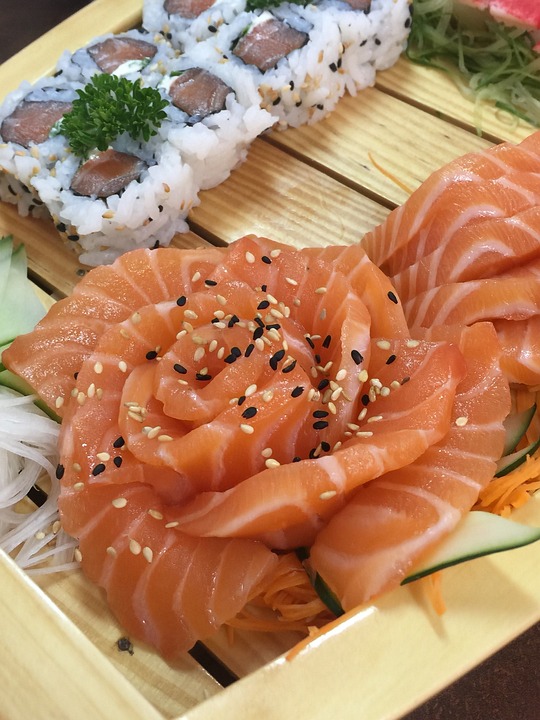[ad_1]
Japanese cuisine is known for its unique and diverse flavors, and one of the key elements that contribute to this is the use of fermented foods. Fermentation has been a part of Japanese food culture for centuries, and it plays a crucial role in the creation of some of the most iconic dishes and condiments in the country.
The Role of Fermented Foods in Japanese Cuisine
Fermented foods are a staple in Japanese cuisine, and they are used in a variety of ways to enhance the flavor and nutritional profile of dishes. Some of the most common fermented foods in Japanese cuisine include:
- Miso: A traditional Japanese seasoning produced by fermenting soybeans with salt and the fungus koji. Miso is commonly used in soups, marinades, and sauces, and it adds a rich, savory flavor to dishes.
- Soy sauce: Another iconic Japanese condiment, soy sauce is made through the fermentation of soybeans and wheat. It is used as a dipping sauce, seasoning, or marinade, and it contributes a salty and umami flavor to dishes.
- Amazake: A sweet fermented rice drink that is often consumed as a dessert or used as a natural sweetener in cooking.
- Natto: Fermented soybeans that are known for their strong, pungent flavor. Natto is often eaten with rice for breakfast and is a source of probiotics and other beneficial nutrients.
- Shiokoji: A fermented seasoning made from rice koji, salt, and water. It is used to marinate meats, fish, and vegetables, and it enhances the umami taste of foods.
The Art of Fermentation in Japanese Cuisine
Fermentation is a delicate and intricate process that requires skill and experience. In Japanese cuisine, the art of fermentation is passed down through generations, and it is often seen as a form of culinary craftsmanship. The key to successful fermentation lies in creating the ideal environment for beneficial bacteria and microorganisms to thrive, which results in the development of complex flavors and textures.
One of the most crucial elements in Japanese fermentation is koji, a type of fungus that is used to kickstart the fermentation process. Koji is responsible for breaking down the proteins and starches in ingredients such as soybeans and rice, resulting in the formation of flavorful compounds and nutrients. It is used in the production of miso, soy sauce, sake, and a variety of other fermented foods and beverages. The skillful control of temperature, humidity, and time is also essential in the fermentation process, as it allows for the development of nuanced flavors and aromas.
Exploring Fermented Foods in Japanese Cuisine
For those looking to experience the diverse flavors of Japanese fermented foods, there are several traditional dishes and preparations to explore. Some popular options include:
- Miso soup: A classic Japanese dish made with dashi stock and miso paste, often served with tofu, seaweed, and vegetables.
- Sushi: The iconic Japanese dish featuring vinegared rice and a variety of toppings, including fermented fish, pickled vegetables, and soy sauce.
- Natto rice: A simple and nutritious dish consisting of steamed rice topped with fermented natto, soy sauce, and mustard.
- Tsukemono: A selection of pickled vegetables, such as cucumbers, radishes, and cabbage, which are served as a side dish or garnish.
Additionally, there are numerous restaurants and specialty shops in Japan that offer an array of fermented foods and products for those looking to delve deeper into the world of fermentation. Visitors can also partake in workshops and tours to learn about traditional fermentation techniques and the cultural significance of fermented foods in Japanese cuisine.
Conclusion
Japanese cuisine is a treasure trove of flavors and textures, and fermentation plays a vital role in creating the diverse and complex tastes that define it. Not only do fermented foods add depth and richness to dishes, but they also contribute to the health benefits of the Japanese diet, including improved digestion and increased nutrient absorption. By exploring the world of fermented foods in Japanese cuisine, one can gain a deeper appreciation for the time-honored traditions and culinary expertise that have shaped the gastronomic landscape of Japan.
FAQs
What are the health benefits of fermented foods in Japanese cuisine?
Fermented foods in Japanese cuisine are rich in beneficial bacteria, enzymes, and nutrients that can support gut health, immunity, and overall well-being. They are also a source of essential amino acids and vitamins, contributing to a well-rounded and nutritious diet.
Are there vegetarian and vegan options for fermented foods in Japanese cuisine?
Yes, there are plenty of vegetarian and vegan options for fermented foods in Japanese cuisine, including miso, soy sauce, pickled vegetables, and fermented rice-based products. These options provide a wide range of flavors and textures for individuals following plant-based diets.
How can I incorporate Japanese fermented foods into my cooking at home?
You can easily incorporate Japanese fermented foods into your cooking at home by using them as seasonings, marinades, or condiments. For example, miso can be used to make dressings and sauces, soy sauce can be used as a flavor enhancer in stir-fries and soups, and pickled vegetables can be added to salads and rice dishes.
[ad_2]





Comments